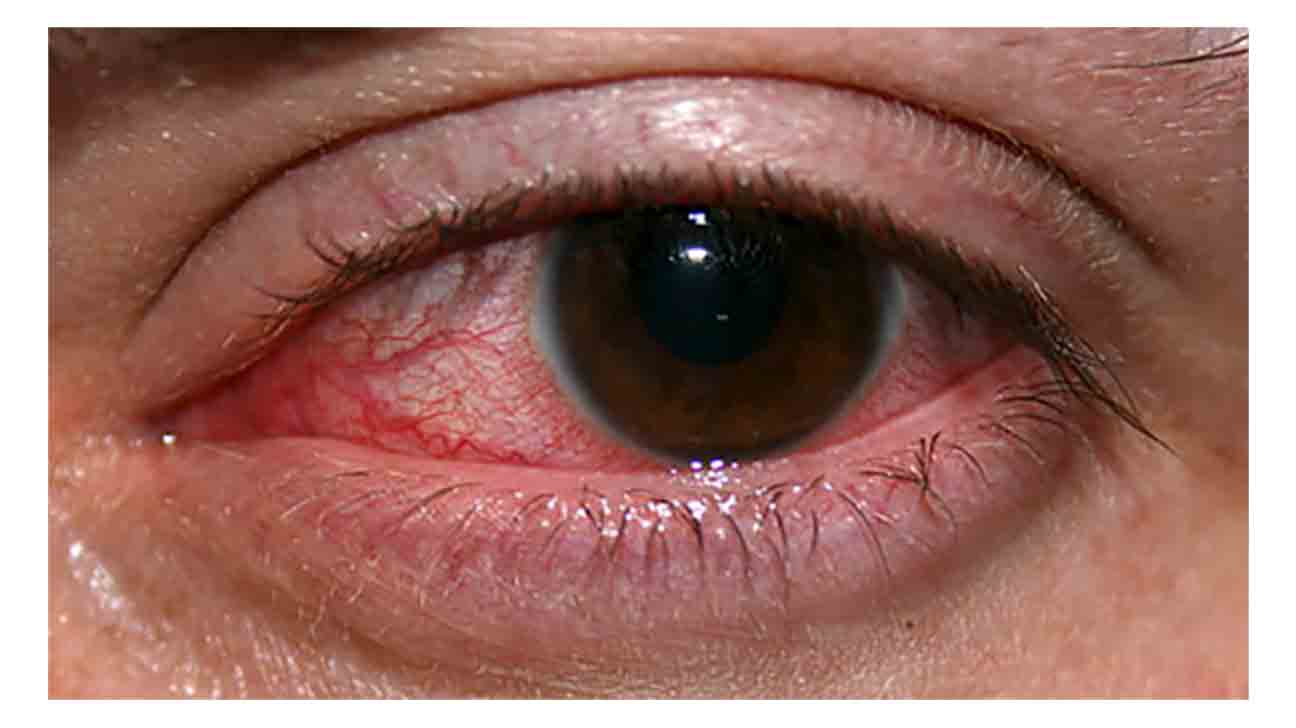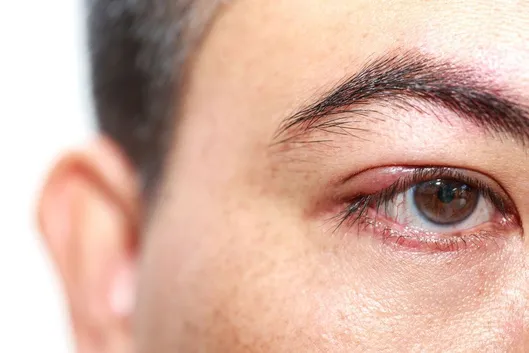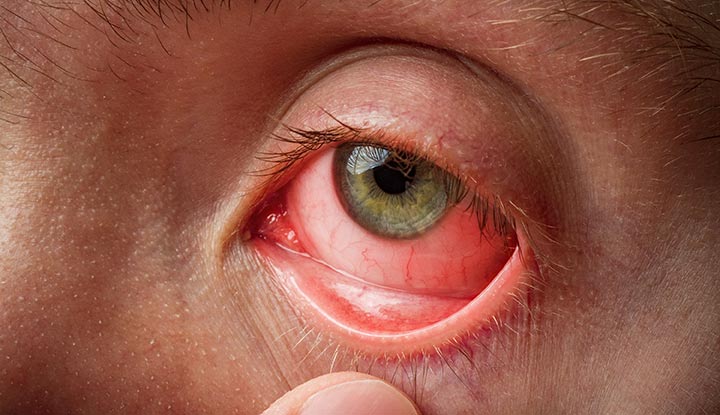10 Essential Tips to Prevent and Treat Eye Infections
Are you looking for ways to prevent and treat eye infections? In this article, we will share with you 10 effective tips to keep your eyes healthy and infection-free. From practicing good hygiene habits to avoiding irritants, these simple yet essential measures can help safeguard your precious sight. So, if you want to know how to protect yourself from common eye infections, read on!
Types of Eye Infections
Eye infections can occur due to various reasons and can affect different parts of the eye. Here are some common types of eye infections:
-
Conjunctivitis: Also known as pink eye, conjunctivitis is a highly contagious infection that affects the conjunctiva, the thin clear tissue covering the white part of the eye. It can be caused by a viral or bacterial infection.
-
Stye: A stye is an infection or inflammation of an eyelid gland typically caused by bacteria. It appears as a small red bump on the edge of the eyelid and may be painful.
-
Blepharitis: This condition involves inflammation around the base of your eyelashes, usually resulting from bacterial overgrowth or blockage in oil glands near your eyelids.
-
Keratitis: Keratitis refers to an infection in the cornea, which is characterized by pain, redness, blurred vision, and sensitivity to light. It can be caused by bacteria, viruses, fungi, or parasites.
-
Orbital cellulitis: Orbital cellulitis is a serious infection that affects tissues surrounding your eyeball within your skull socket (orbit). It often starts with an untreated sinus infection but may also result from trauma to the eye area.
-
Endophthalmitis: This severe infection occurs inside your eyes and can lead to vision loss if not treated promptly. It most commonly happens after eye surgery or penetrating injuries when bacteria enter into internal ocular structures.
-
Herpes keratitis: Herpes simplex virus (HSV) can cause recurring episodes of painful keratitis characterized by sores on or near your cornea.
-
Acanthamoeba keratitis: This rare but serious parasitic infection mainly affects contact lens wearers who don’t follow proper lens hygiene practices like cleaning them properly before use.
Remember, if you suspect an eye infection or experience persistent symptoms such as redness, itching, pain, discharge, or changes in vision, it’s important to seek medical attention promptly. Proper diagnosis and timely treatment can help prevent complications and safeguard your eye health.
Causes of Eye Infections
Eye infections can be caused by various factors that lead to the growth and spread of harmful bacteria, viruses, or fungi. Understanding the causes can help you take necessary precautions to prevent eye infections. Here are some common causes:
-
Bacterial Infections: Bacteria like Staphylococcus aureus and Streptococcus pneumoniae can cause bacterial conjunctivitis, commonly known as pink eye. These bacteria are often transmitted through direct contact with contaminated hands or objects.
-
Viral Infections: Viruses such as adenovirus and herpes simplex virus can result in viral conjunctivitis. This type of infection is highly contagious and spreads easily from person-to-person or through touching infected surfaces.
-
Allergies: Allergic reactions to substances like pollen, pet dander, or dust mites can cause redness, itching, and swelling in the eyes. These symptoms may mimic an eye infection but are not caused by pathogens.
-
Contact Lenses: Improper use or maintenance of contact lenses can increase the risk of eye infections. Failure to clean lenses regularly or using expired solutions may introduce harmful microorganisms into your eyes.
-
Poor Hygiene Habits: Not washing hands before touching your eyes or sharing personal items like towels and cosmetics with others increases the chances of developing an eye infection.
6
Common Symptoms of Eye Infections
- Redness in the eyes
- Itchy or irritated eyes
- Excessive tearing or watery eyes
- Sensitivity to light (photophobia)
- Pain or discomfort in the eye(s)
- Blurred vision or difficulty focusing
- Discharge from the eye(s), which may be yellow, green, or white
- Crusty eyelashes upon waking up
- Swollen eyelids
Eye infections can manifest with a variety of symptoms that are often uncomfortable and disruptive. These symptoms can vary depending on the specific type of infection and its severity. By recognizing these common signs, you can take appropriate measures to seek treatment and prevent further complications.
One prominent symptom is redness in the eyes, where blood vessels become dilated due to inflammation. This redness is usually accompanied by itchiness and irritation, leading to an intense urge to rub your eyes. Alongside this discomfort, excessive tearing or watering of the eyes may occur as a protective response from your body.
Sensitivity to light is another telltale sign of an eye infection. Even normal levels of brightness might cause discomfort for those affected. Additionally, pain or general discomfort within one or both eyes could indicate an underlying infection.
Vision-related issues may also arise during an eye infection. Blurred vision and difficulty focusing are not uncommon when dealing with infected eyes due to changes in tear production and corneal irregularities caused by inflammation.
The presence of discharge from one or both eyes is a clear indication that something is amiss. The coloration can provide valuable information about the specific type of infection present; yellowish discharge typically indicates viral conjunctivitis while greenish discharge suggests bacterial involvement.
Lastly, crusty eyelashes upon waking up are often observed among individuals suffering from certain types of eye infections like conjunctivitis (pink eye). Swollen eyelids may accompany these crusts as well.
If you experience any of these symptoms, it is crucial to consult with an eye care professional promptly. They can diagnose the specific type of infection and recommend appropriate treatment options to alleviate your discomfort and promote a speedy recovery.

Preventing Eye Infections
To protect your eyes from infections, it’s important to follow some simple yet effective tips. Here are 10 ways you can prevent eye infections:
-
Wash Your Hands: Before touching your eyes or applying any eye drops or ointments, make sure to wash your hands thoroughly with soap and water.
-
Avoid Touching Your Eyes: Try to avoid rubbing or touching your eyes unnecessarily, as this can introduce bacteria and viruses into the sensitive area around the eyes.
-
Practice Good Contact Lens Hygiene: If you wear contact lenses, always clean and disinfect them properly according to the instructions provided by your optometrist or lens manufacturer.
-
Replace Mascara Regularly: Mascara should be replaced every three months to prevent bacterial buildup that could lead to an eye infection.
-
Don’t Share Eye Makeup: Sharing eye makeup products like mascara, eyeliners, or eyeshadows can transfer bacteria from one person’s eyes to another’s, increasing the risk of infection.
-
Protect Your Eyes in Public Pools: When swimming in public pools, use swim goggles to shield your eyes from potential contaminants such as chlorine and other chemicals.
-
Avoid Direct Contact with Irritants: Take precautions when working with substances that may irritate the eyes such as cleaning products or strong chemicals – wear protective glasses if necessary.
-
Maintain a Healthy Lifestyle: A nutritious diet rich in vitamins A, C, and E along with regular exercise helps support overall eye health and reduces the risk of infections.
-
Keep Your Environment Clean: Regularly clean surfaces that come into frequent contact with your face like pillowcases, towels, sunglasses frames etc., using mild detergent or disinfectant wipes.
-
Visit an Optometrist Regularly: Schedule routine eye exams with an optometrist who will check for signs of infection or other eye health issues, ensuring early detection and prompt treatment if needed.
By following these preventive measures, you can significantly reduce the risk of developing eye infections. Remember, your eyes are precious – take care of them!
Proper Hygiene for Healthy Eyes
Proper hygiene plays a crucial role in maintaining the health of your eyes. By following these simple practices, you can minimize the risk of eye infections and ensure optimal eye health:
-
Wash your hands frequently: Before touching your eyes or applying any eye drops or medications, it is important to wash your hands thoroughly with soap and water.
-
Avoid rubbing your eyes: Rubbing your eyes can introduce harmful bacteria and irritants into them. Instead, use a clean tissue or a soft cloth to gently wipe away any debris.
-
Keep contact lenses clean: If you wear contact lenses, it’s essential to follow proper cleaning and disinfection procedures recommended by your eye care professional. Always use fresh solution when storing them overnight.
-
Replace makeup regularly: Eye cosmetics such as mascara, eyeliner, and eyeshadow have an expiration date too! Replace them regularly to avoid bacterial growth that could lead to eye infections.
-
Don’t share personal items: Sharing towels, pillows, or other personal items can spread bacteria that may cause eye infections between individuals.
-
Protective eyewear is key: When engaging in activities that pose a risk of injury (e.g., sports or working with hazardous materials), always wear appropriate protective eyewear like goggles or safety glasses.
-
Avoid touching your face unnecessarily: Minimize unnecessary touching of your face since this increases the chance of introducing dirt and germs into the sensitive areas around the eyes.
-
Cleanse eyelids gently: Regularly cleanse your eyelids using mild baby shampoo diluted with warm water on a clean cotton pad to remove debris from lashes and reduce the risk of inflammation.
9 .Avoid sharing makeup tools: Using shared makeup brushes or applicators can transfer bacteria from one person’s skin to another’s, increasing the likelihood of developing an eye infection.
10 .Maintain a healthy lifestyle: A nutritious diet rich in vitamins and minerals, regular exercise, adequate sleep, and staying hydrated contribute to overall eye health.
By adopting these simple hygiene practices as part of your daily routine, you can significantly reduce the risk of eye infections and promote long-term eye health. Remember that prevention is always better than cure when it comes to maintaining the well-being of your eyes!

When to Seek Medical Attention
If you experience any of the following symptoms, it is important to seek medical attention for your eye infection:
-
Severe Pain: If you are experiencing intense pain in your eyes that continues to worsen, it could be a sign of a more serious condition. Visit an eye doctor immediately.
-
Vision Changes: Any sudden changes in your vision such as blurriness or double vision should not be ignored. These can indicate a serious underlying issue and require prompt medical evaluation.
-
Increased Sensitivity to Light: If you find yourself becoming unusually sensitive to light or experiencing discomfort when exposed to bright lights, it may indicate an eye infection that requires professional treatment.
-
Persistent Redness: While some redness is common with minor infections, if the redness persists or becomes increasingly severe, it’s advisable to consult with an ophthalmologist for proper diagnosis and treatment.
-
Swelling and Discharge: Excessive swelling around the eyes accompanied by discharge might suggest a more severe infection like conjunctivitis (pink eye). Seeking medical attention will help determine appropriate medication.
-
Foreign Object Sensation: Feeling like there’s something stuck in your eye even after flushing it out warrants immediate medical assessment as there could be damage or irritation that needs attention.
-
Fever and Headache: If along with other symptoms you also develop high fever and persistent headaches, this could be indicative of a systemic infection spreading beyond just the eyes necessitating urgent care from a healthcare professional.
-
Contact Lens Wearers’ Warning Signs: Contact lens wearers who experience discomfort, increased redness, blurred vision while wearing lenses must stop using them immediately and schedule an appointment with their optometrist.
Remember: It’s always better to err on the side of caution when dealing with potential eye infections – seeking early medical intervention can prevent complications that may lead to vision loss.
Home Remedies for Eye Infections
When it comes to treating eye infections, there are several effective home remedies that can help alleviate the symptoms and promote healing. Here are some simple yet powerful remedies you can try:
-
Warm Compress: Applying a warm compress to your infected eye can provide relief from itching, redness, and swelling. Soak a clean cloth in warm water, wring out the excess moisture, and gently place it over your closed eyelid for 5-10 minutes.
-
Tea Bags: The tannic acid present in tea bags has anti-inflammatory properties that can soothe an infected eye. After steeping two tea bags in hot water for a few minutes, let them cool down before placing one on each eye for 15-20 minutes.
-
Saline Solution: Rinse your eyes with a homemade saline solution made by mixing 1 teaspoon of salt with 1 cup of distilled water. Use an eyecup or dropper to flush out any debris or discharge from the affected eye.
-
Honey: Known for its antibacterial properties, honey can be used as a natural remedy for mild eye infections. Dilute raw honey with boiled and cooled water (in equal parts) and apply a drop or two directly onto the infected area using a clean eyedropper.
-
Aloe Vera Gel: Apply freshly extracted gel from an Aloe Vera plant directly onto the infected eye using a cotton swab or clean fingers. This will help reduce inflammation and promote healing due to its soothing properties.
-
Cucumber Slices: Placing chilled cucumber slices over closed eyes not only provides cooling relief but also helps reduce redness and puffiness caused by eye infections.
Remember that while these home remedies may offer temporary relief, they should not replace professional medical advice if your condition worsens or persists beyond a few days.
Conclusion
In conclusion, these 10 eye infection tips provide simple and effective ways to maintain healthy eyes. By following these guidelines, you can reduce the risk of developing an eye infection and ensure optimal eye health.
Firstly, maintaining good hygiene practices such as washing hands regularly and avoiding touching your eyes with dirty hands is crucial in preventing the spread of bacteria or viruses that can cause infections. Additionally, it is important to avoid sharing personal items like towels or contact lenses to minimize the chances of contamination.
Secondly, practicing proper contact lens care is essential for those who wear them. This includes cleaning and disinfecting lenses as instructed by your optometrist or using daily disposable lenses. It’s also vital to replace contact lens cases regularly to prevent bacterial growth.
Furthermore, protecting your eyes from harmful UV rays by wearing sunglasses with UV protection can help prevent certain eye infections caused by sun damage. Moreover, maintaining a balanced diet rich in vitamins A, C, E, and omega-3 fatty acids supports overall eye health.
Lastly, if you experience any signs or symptoms of an eye infection such as redness, itching, discharge or blurry vision; seek prompt medical attention from an optometrist or ophthalmologist.
Remember that prevention is always better than cure when it comes to eye infections. By implementing these tips into your daily routine and being proactive about your eye health, you can significantly reduce the risk of encountering common eye infections and enjoy clear vision for years to come.

